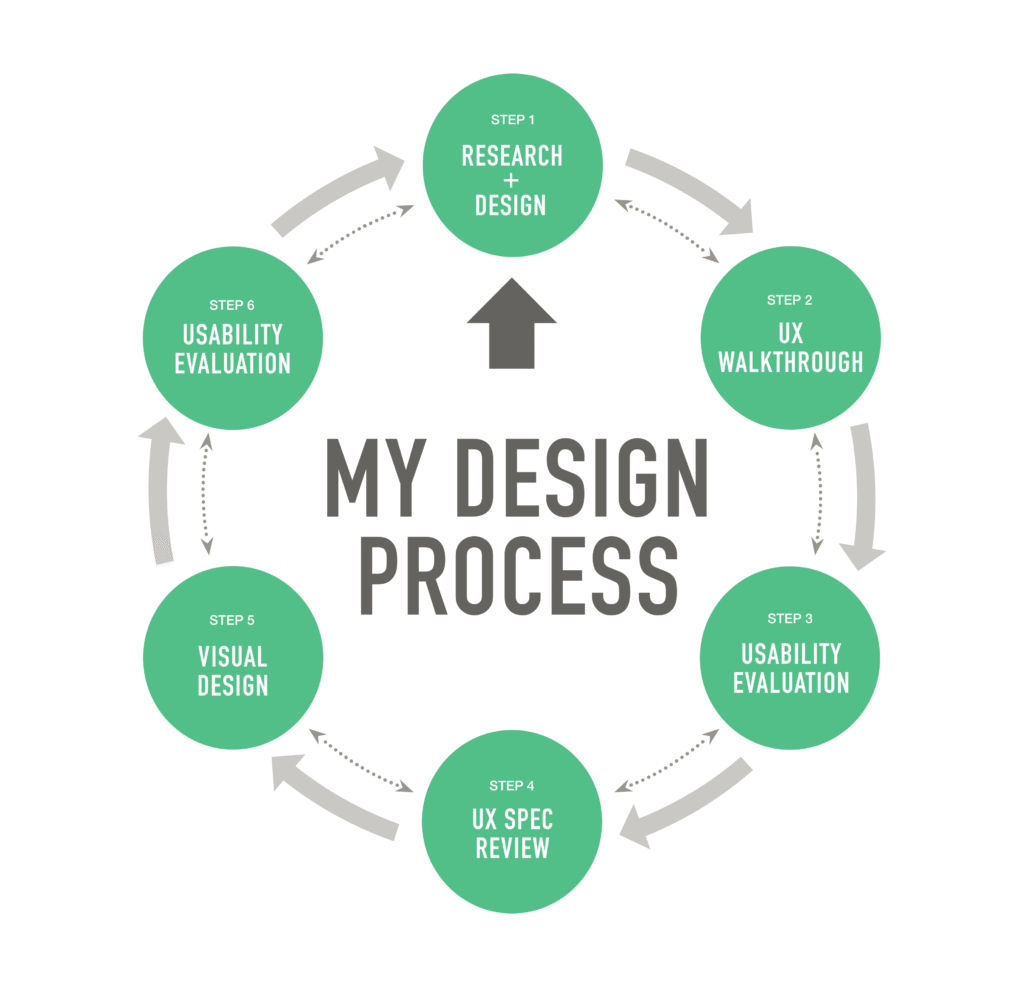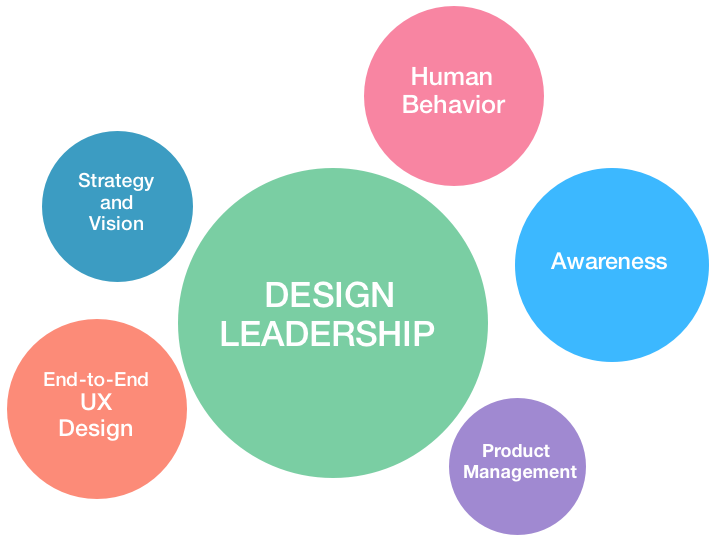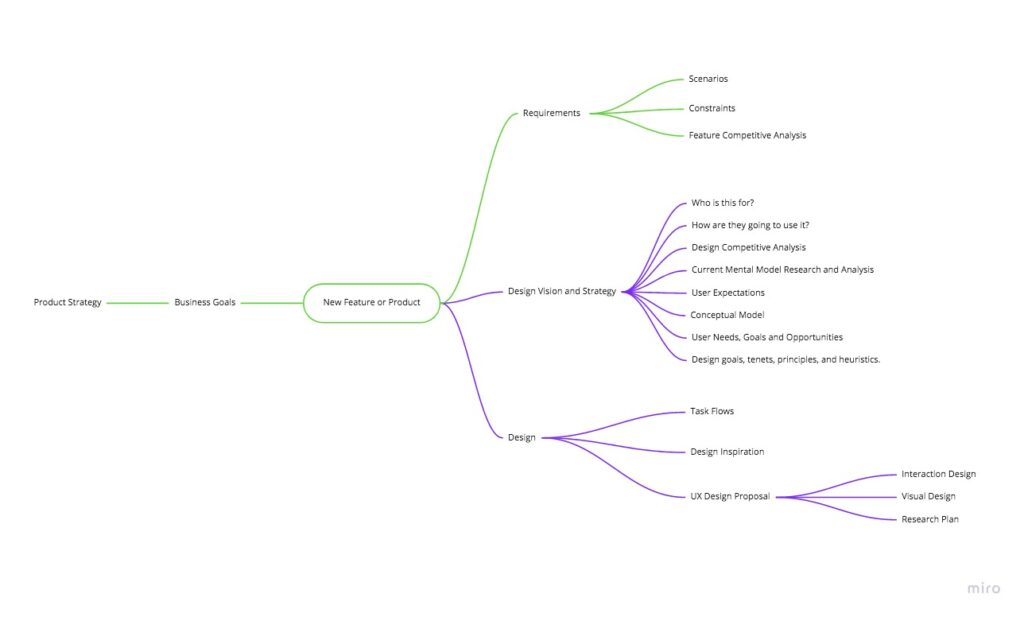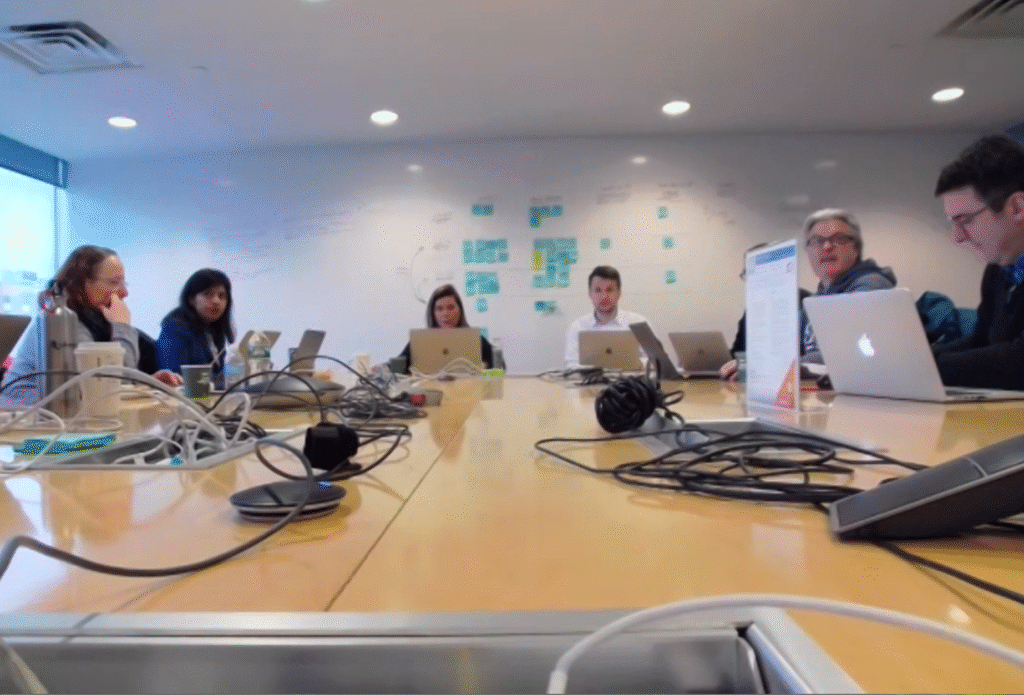
1. Research & Feature Design
I begin by understanding the problem space—this includes reviewing existing data, talking to users or stakeholders, and mapping out workflows. From there, I design the foundational UX for the new feature area, ensuring it aligns with both user needs and technical constraints.
2. UX Walkthrough & Alignment
I create an interactive UX walkthrough or prototype that illustrates the proposed experience end-to-end. This becomes a key artifact to align cross-functional teams, spark discussion, and gather early feedback.
3. Rapid Iterative Testing (RITE)
I validate the experience through quick, lightweight usability tests with real or proxy users. This allows me to spot friction points and make fast, meaningful improvements before further investment.
4. UX Specification & Review
After refining the prototype, I create a detailed UX specification document. I walk through this with stakeholders—PMs, engineers, and design peers—to ensure clarity, feasibility, and alignment.
5. Visual Design & Handoff
If there is a separate visual design team, I collaborate with them to ensure the final UI meets both aesthetic and functional goals, while maintaining UX intent. If we have an established Design System in place, I design high-fidelity screens from the get go and work with the Design Sytem team to feed them any new requirements for existing components or for a custom component we might need.
6. Final Usability Evaluation (if needed)
For high-impact features, I coordinate or conduct a final round of usability evaluation post-implementation to identify opportunities for future refinement.
I bring a mixture of different skills to the table including end-to-end UX design and strategy and vision. I always wear my Product Management hat when designing new features and I have a personal interest on human behavior and awareness in general which also educates my designs and influences my decisions.

This is a mind map of the different deliverables or artifacts I either consume or produce during my process.

Depending on the feature and what it needs you might find me creating task flow diagrams, running innovation workshops with engineering and PM or doing card sorts or other usablity studies to figure out feature organization.

In short, I have a predefined process I follow but I adapt it to every new feature or project I work on depending on their own individual and specific needs.